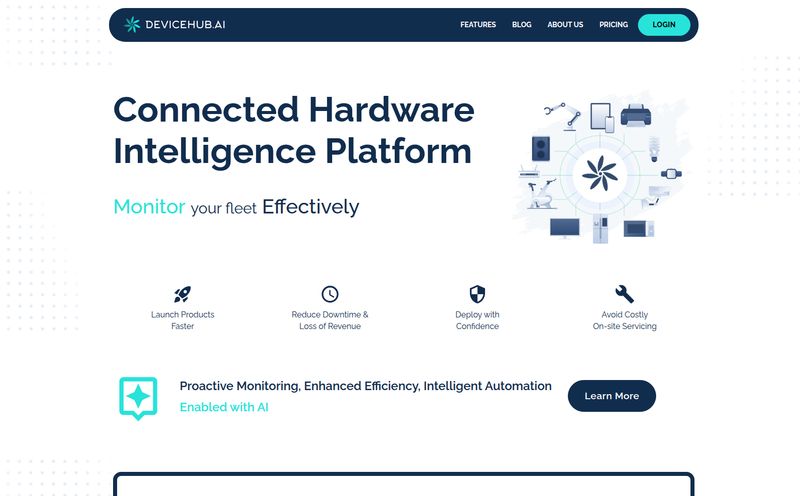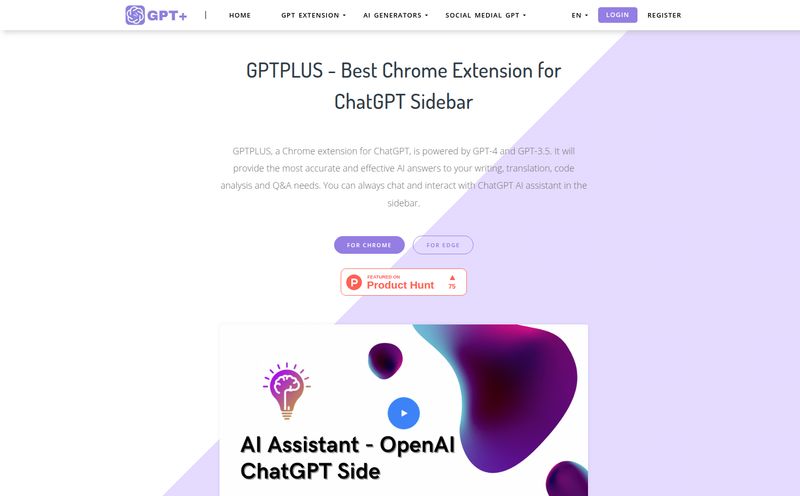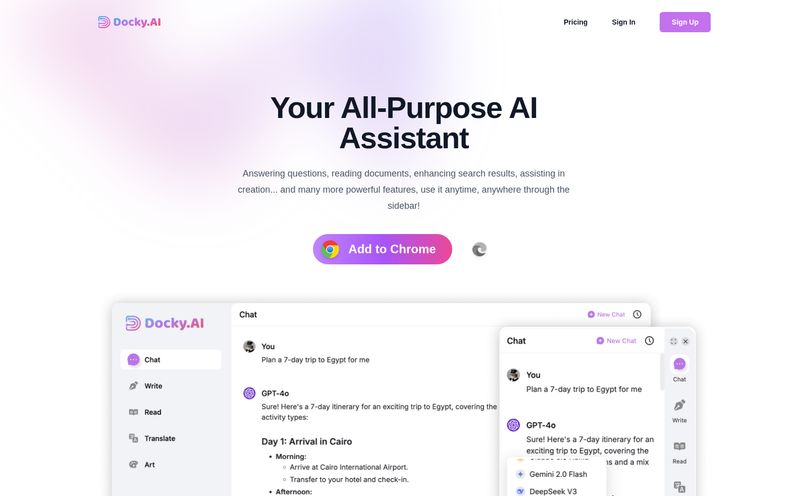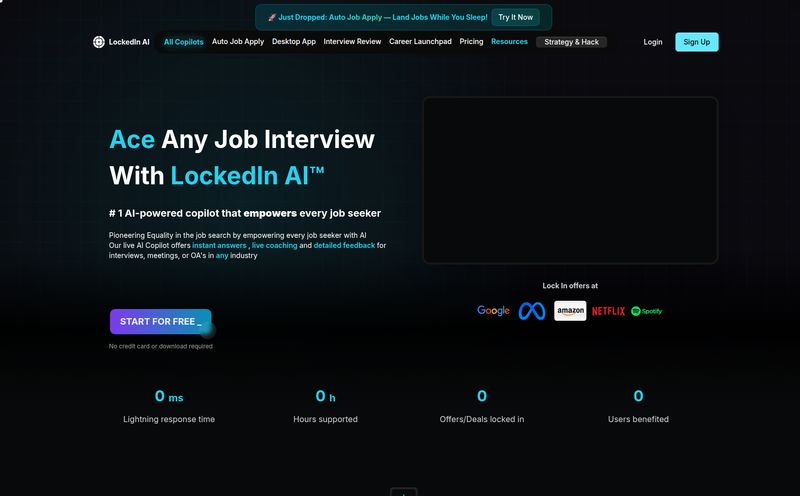Every single day, my inbox, my Feedly, my X feed… it’s a constant barrage of “The NEW AI Tool That Will Change Everything!” And honestly? Most of them are just thin wrappers on an API call. Another ChatGPT clone, another AI image generator, another code-completion tool that’s basically a slightly-smarter version of the IntelliSense we’ve had for years.
So when I first saw TRAE, I was skeptical. The homepage hits you with some pretty bold claims: “The First Real AI Engineer.” and “The Smartest Way To Build With AI.”
Big words. A part of me thought, here we go again. But I’ve been in the SEO and dev space long enough to know you don’t dismiss something without kicking the tires first. So I dug in. And what I found was… well, it’s interesting. Genuinely interesting. It’s not just another coding assistant. It feels like a philosophical shift in how we approach software development with AI.
So, What Is TRAE, Really?
Forget thinking of this as just an alternative to GitHub Copilot. That's like comparing a Swiss Army knife to a fully-stocked workshop. TRAE presents itself as an entire AI-powered Integrated Development Environment (IDE). The goal isn't just to help you write code faster; it's to manage the entire development lifecycle, from the initial idea scribbled on a napkin (or a digital one, anyway) all the way to launch.
It's built on the idea of collaboration. Not just between you and other human developers, but between you and a team of AI agents. Think of it less like a parrot on your shoulder repeating code snippets, and more like a junior dev you can actually delegate complex tasks to. A junior dev that doesn’t drink all the coffee or complain about merge conflicts.
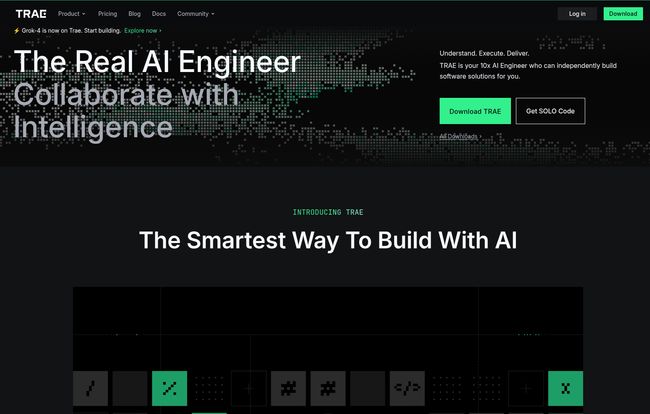
Visit Trae
The Standout Features That Caught My Eye
This is where things get spicy. TRAE isn't just a single feature; it's a collection of concepts that work together. Here's what made me sit up and pay attention.
AI Agents: Your New Autonomous Teammates
This is the headline act. TRAE gives you a framework to create and customize your own AI agents for specific tasks. The demo shows an agent named "MCP" (a cool nod to Tron for us older nerds), which acts as a master control program for the project. You can literally tell it, “Collaborate with Builder on the MCP,” and it understands the context and starts working.
This moves way beyond simple prompt-and-response. This is task automation on a whole new level. Imagine having an agent dedicated to writing unit tests, another for refactoring legacy code, and a third for drafting documentation. That’s the promise here. It's a system designed to ship code autonomously, which is a wild concept.
Dual Development Modes: Go It Alone or With the Machine
TRAE has two primary modes: Human and Autonomous. This is smart. It recognizes that sometimes you want to be in the driver's seat, and other times you want to be the architect who gives the orders. You can work solo, using the AI to enhance your own workflow, or switch to a multi-dev environment where AI agents act as full-on collaborators.
This flexibility is huge. It means TRAE could be as useful for a solo indie hacker building a new SaaS as it is for a large team trying to accelerate their sprints. It’s not a one-size-fits-all approach, and I really appreciate that nuance.
Context Awareness and a Big Nod to Security
Of course, it has smart autocompletion. That’s table stakes in 2024. But where it seems to differ is in its Context Awareness. Because it's a full IDE, it's not just looking at the single file you're in; it's aware of the entire project structure, the dependencies, the project goals. This should, in theory, lead to much more relevant and accurate suggestions.
More importantly, let's talk security. The single biggest reason my dev friends are hesitant to go all-in on AI tools is privacy. “Is my proprietary code being sent to some server to train a future model?” It’s a valid fear. TRAE seems to address this head-on:
- Local Data Storage: The site explicitly states, "Your code and data stays with you." This is a massive selling point.
- Secure Data Access: It uses fine-grained permissions based on your existing file access rights.
- Regional Deployment: You can store your data regionally to comply with regulations like GDPR. Big win for European teams.
This commitment to privacy makes it a much more viable option for professional developers and businesses who can't just throw their codebase into the void.
What's the Catch? A Couple of Caveats
No tool is perfect, especially a new one. Based on what I've seen and the info provided, there are a couple of things to keep in mind. First, like any cloud-heavy tool, the speed of code generation is going to be tied to your network connection. If you're on spotty Wi-Fi, you might feel the lag.
Second, it seems the platform is still growing. The documentation notes that model settings for new and local models are still being developed. This isn't a deal-breaker for me; in fact, I appreciate the transparency. It tells me they're actively building and not pretending to be a finished product. But it does mean early adopters might be in for a bit of a bumpy ride as new features roll out.
The Big Question: What's This Going to Cost Me?
Ah, the pricing page. The moment of truth for any new tool. And when I navigated to TRAE’s pricing page… I was met with a loading spinner. Just spinning, forever into the digital abyss.
Okay, so the pricing isn't public just yet. But we can piece together some clues. The site screams “Try it for Free” and “Upgrade to increase limits.” The FAQ section also mentions a “Pro plan,” a discount for “new subscribers,” and policies for running out of AI requests. This all points to a classic freemium model.
My guess? There's a generous free tier to get you hooked, probably with a cap on the number of AI agent tasks or requests per month. The “Pro” plan will likely unlock unlimited usage and more advanced features. The lack of a public price could mean a few things: they're still finalizing it, it's in a closed beta with custom pricing, or they're targeting enterprise customers with bespoke plans. For now, you can get started without pulling out your credit card, which is always a plus.
Frequently Asked Questions about TRAE
Is TRAE just for teams or can solo developers use it?
It's definitely designed for both. With its "Human Mode" and smart autocompletion, a solo developer can significantly speed up their workflow. The "Autonomous Mode" and collaborative agents just add another layer for when you want to delegate.
How does TRAE handle data privacy?
This is one of its strong suits. TRAE emphasizes local data storage, meaning your code doesn't have to leave your machine. It also offers secure access permissions and regional data deployment to comply with local regulations, which is a huge plus for professionals.
What is an AI Agent in TRAE?
Think of an AI Agent as a specialized, autonomous program you can customize. Instead of just asking a generic chatbot for code, you can have a dedicated agent for a specific role, like 'TestWriter' or 'DocDrafter', that can work on tasks independently within your project.
Is TRAE free to use?
Yes, it appears to have a free-to-start model. You can download and try it for free. They mention a "Pro plan" and usage limits, so there will be paid tiers for heavier users or advanced features, but the exact pricing isn't public as of this writing.
What happens if I run out of AI requests on the free plan?
Based on their FAQ structure, it's implied that exceeding your limit on a free or lower-tier plan would require an upgrade to the Pro plan to continue using the AI features at a high volume. Specifics would likely be detailed once you're in the platform.
Final Thoughts: Is TRAE the Future?
I started out skeptical, but I'm leaving impressed. TRAE is not just another drop in the AI ocean. It's a thoughtful, ambitious take on what the future of software development could look like. The focus on autonomous agents, project-level context, and developer-first security is a powerful combination.
Is it the “First Real AI Engineer?” That's a bold claim to live up to. But from what I can see, it's one of the first platforms to truly try. It’s aiming for something more than just assistance; it's aiming for partnership. And in a world cluttered with AI hype, that genuine ambition is refreshing. I, for one, will be keeping a very close eye on this one. It might just be the smartest way to build with AI after all.
Reference and Sources
- TRAE Official Website
- For direct inquiries or feedback, the team can be reached at: [email protected]
